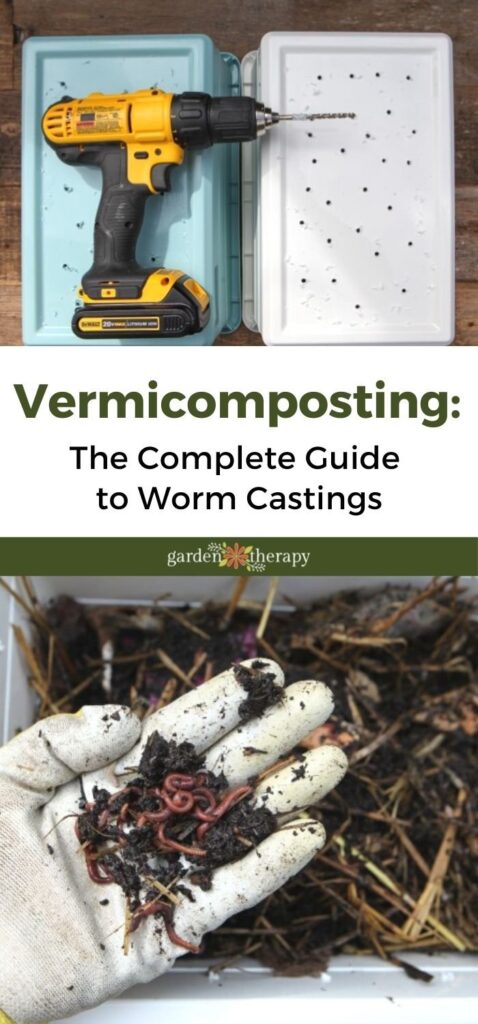Vermicomposting: The Full Data to Worm Castings
Worms have dug their method into my coronary coronary heart, and likewise you’re about to understand why! Using the ability of worm castings, you can totally rework your yard naturally. Grasp the observe of vermicomposting with this info on one of the simplest ways to make use of worms and kitchen scraps to create the best pure matter.
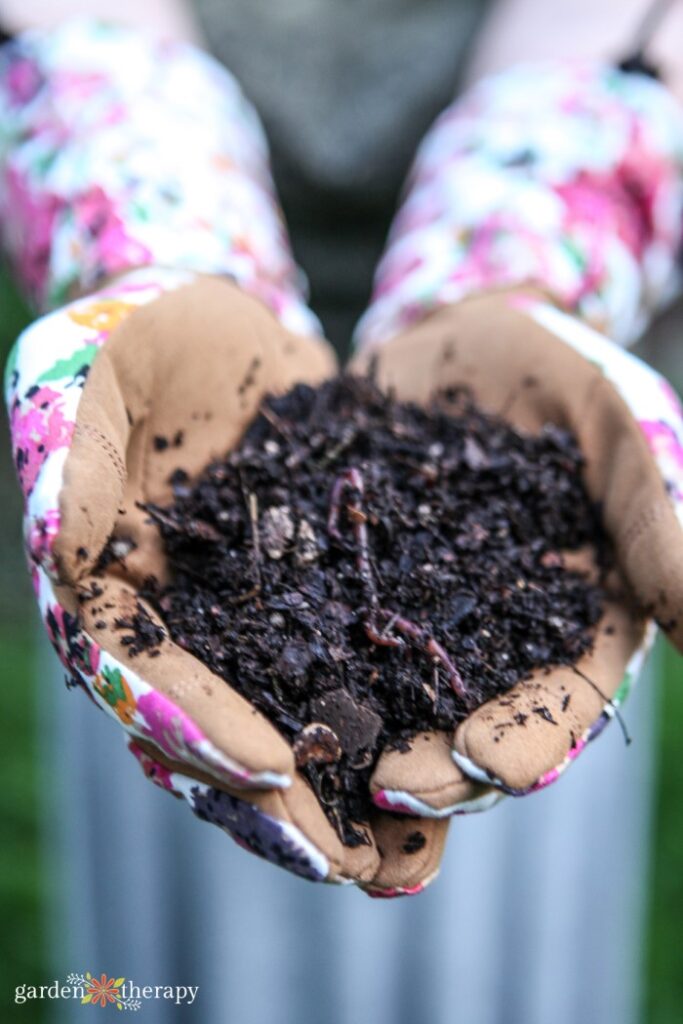
By way of nice bugs, why do bees, butterflies, and ladybugs get the entire love? Whereas I love these useful bugs as loads as the following particular person, I’m proper right here to shout out my love for worms from the rooftop gardens everywhere in the world.
Whether or not or not you think about worms as buddies or hard-working employees, they are a welcome addition to my yard every day. Even after I can’t see them.
An unknown observe to many, vermicomposting harnesses the superpowers of the worm to create just a few of probably the most potent fertilizers spherical. With vermicomposting in your facet, you must have the fullest, greenest vegetation throughout the neighbourhood by far!
Proper right here’s what I’ll be overlaying presently…
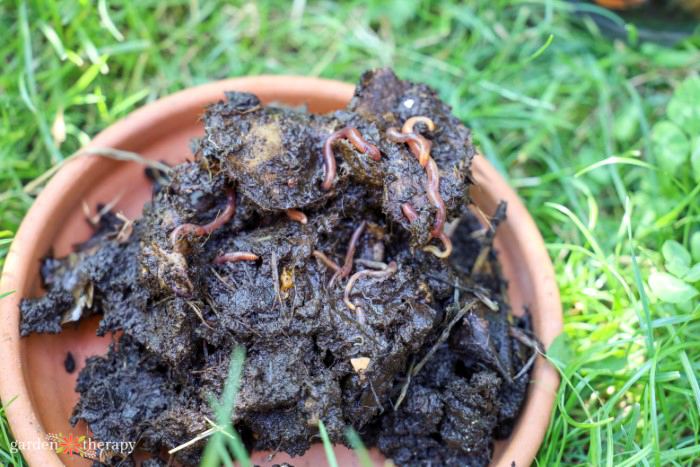

What’s Vermicomposting?
Vermicomposting is the flowery phrase for having worms as pets. Or, additional technically speaking, intentionally using worms to decompose kitchen scraps and carbon provides like paper and straw.
This ends in worm castings. And certain, worm castings is a nice phrase for worm poop.
Why on earth would you want worm poop, you ask? Worm castings have a loads finer texture than soil and are superb close to holding moisture. If you would like a balanced yard fertilizer, they’re extraordinarily nutritious, though the N-P-Okay values will fluctuate primarily based totally on the worm’s meals plan.
Worm castings appear to be very rich soil. You’ll be aware darkish brown, teeny tiny bits of cloth. Whilst you harvest them, you try and depart behind the entire worms and take their castings in gratitude.
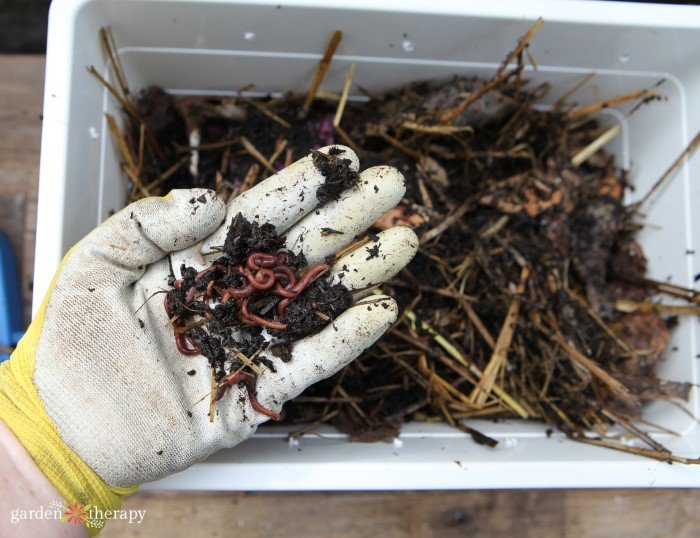

Composting vs Worm Castings
You might add worm castings on to your soil or as an beautiful addition to your compost.
Very like composting, you need greens, browns, water, and air with the intention to make vermicompost. BUT, you need one different essential ingredient…worms!
As talked about earlier, vermicompost holds moisture. That is due to its extreme focus of humus, a carbon-based substance that not solely retains soil hydrated nevertheless spongy texture moreover helps to aerate the soil. Blended with the extreme ranges of nutritional vitamins, vermicompost tends to be additional helpful than compost throughout the yard.
You’ll be aware that mirrored on the retailer too. You can purchase worm castings wherever that moreover promote compost. Vermicompost might have the following price tag than compost, which is why making your private vermicompost bin is so helpful!
Since you can have dwelling creatures in your vermicompost, it’s advisable maintain your bin cool. Compost then once more values heat to decompose supplies and this helps to kill pathogens, weed seeds, and completely different factors. Which implies that vermicompost ought to nonetheless have some pathogens and completely different tiny bugs inside.
Nonetheless, the extra nutritional vitamins and benefits of vermicomposting are properly worth it. The strategy is completely protected for you and your plant infants.
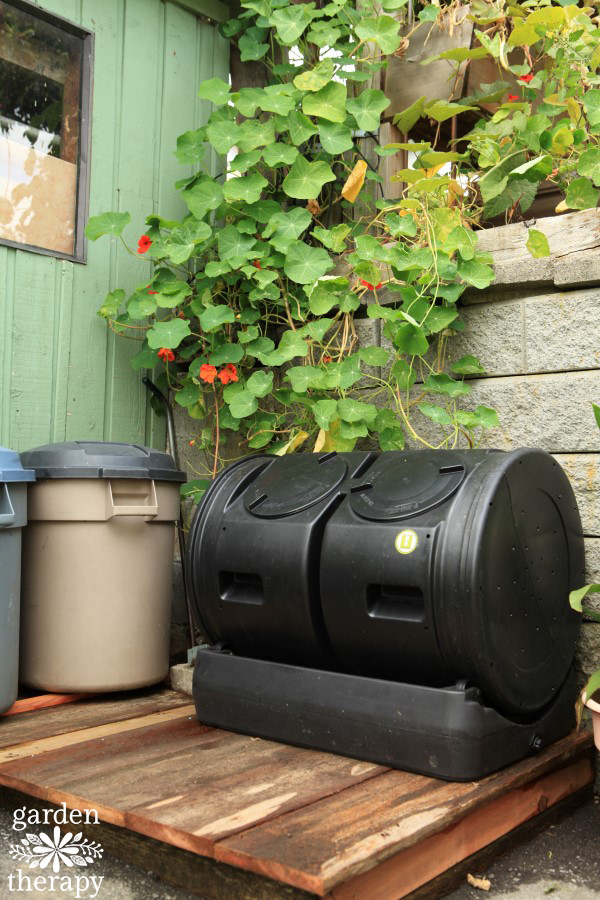

Types of Worms
Not all worms are born equal. When it rains, you can’t merely go exterior and collect worms off the sidewalk to position in your vermicomposting bin.
For vermicomposting, you don’t use the earthworms you may uncover out and about in your yard. As a substitute, you want hungry worms who will happily eat away your kitchen scraps.
Pink Wigglers (Eisenia fetida) are the most typical worm used for vermicomposting. They don’t like soil, instead opting to survive in decomposing leaves, manure, and completely different decomposing provides. That is the rationale they thrive in a vermicomposting bin!
One different widespread alternative is crimson worms (Lumbricus rubellus). They like associated conditions, although you may uncover them extra down throughout the bin, and they also would possibly reproduce a tad slower than crimson wigglers. Nevertheless they’re going to happily eat away and create some worm castings to your revenue.
Taking Care of Your Worms
Create a Dwelling
To make a home applicable for a worm king, it’s advisable fulfill their 4 desires:
- Browns: the bedding and shelter for the worms to reside in. They may even eat this too.
- Greens: yard waste and kitchen scraps for the worms to feast on.
- Water: normally, the kitchen scraps current the entire water that is needed.
- Air: air holes in your vermicomposting bin, along with loosely packed supplies, are essential.
You’ll moreover need a bin itself. See beneath for an easy DIY mannequin. For many who current all these provides, your worms will quickly get proper right down to enterprise and start digesting the meals and bedding. Every month, their inhabitants should double, and they will slowly assemble up the realm.
Don’t concern about growing your worm bin. More often than not, you don’t have to stress about taking worms out or together with additional. They’re self-regulating creatures. As quickly because the meals or space runs low, the worms will stop multiplying and administration their very personal inhabitants. It’s a worm-eat-worm world in the marketplace.
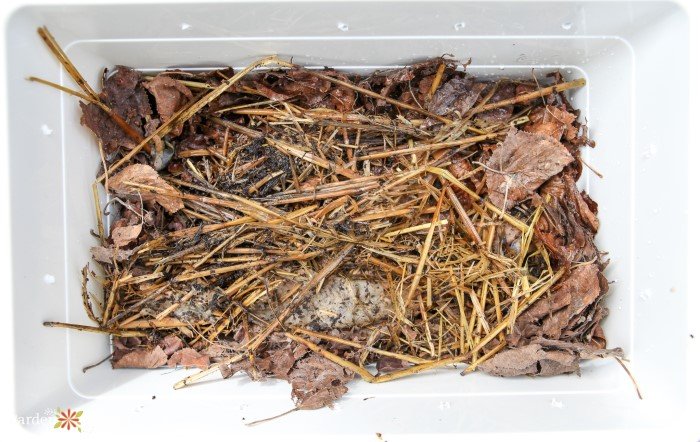

Feeding Your Worms
Think about worms as gluten-free, raw vegans. They’ve a extremely specific meals plan! Worms prefer to eat any raw vegetable scraps, eggshells, espresso grinds, flowers, and inexperienced leaves from the yard.
By means of kitchen scraps, there are particular points it will be finest to exclude out of your vermicomposting bin.
Stay away from…
- Cooked meals
- Dairy
- Meat
- Bones
- Vinegar
- Oil
- Citrus
- Juicy meals like tomatoes or watermelons
- Plant seeds
Like us, they need a balanced meals plan to stay healthful. Make certain that no more than 20% of the meals is made up of 1 supplies. A mix is good!
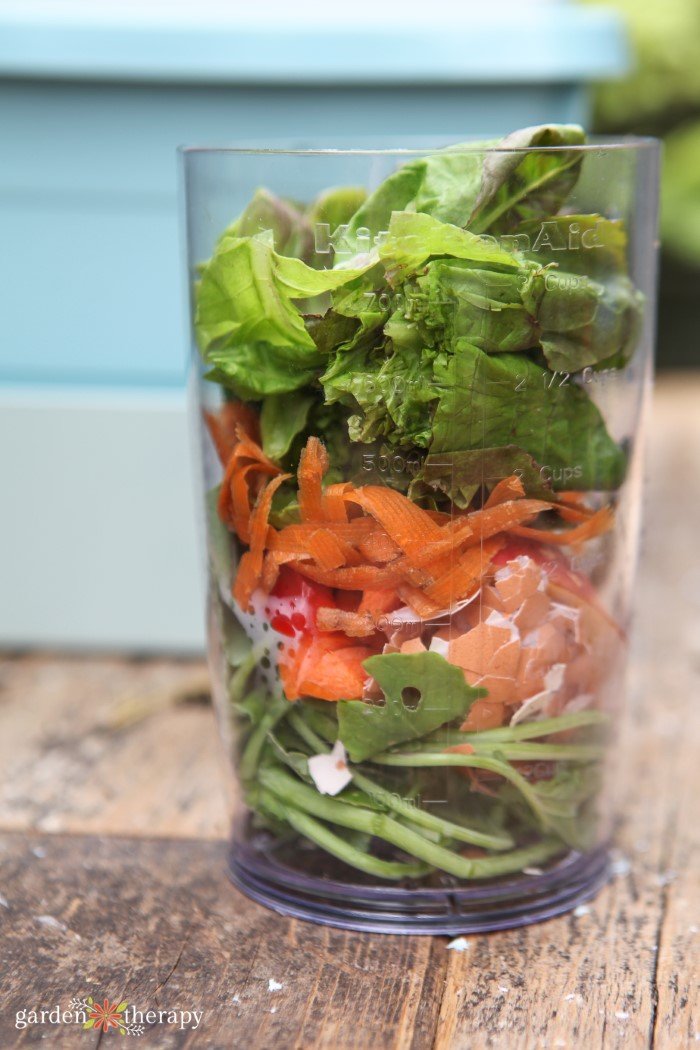

Worms on Journey
Worms would possibly sound like extreme repairs, nevertheless they’re going to simply do good on their very personal. They will merely last a month on their very personal with none new meals being added to their bin. Feed them sooner than you permit and should you get dwelling, and they will happily do their very personal issue once you’re away.
Troubleshooting
Rotate The place You Place Meals Scraps
Some points would possibly go awry collectively together with your bin. To make sure your bin is a hospitable place for the worms to reside, alternate the place you place your meals scraps throughout the bin.
Each week, designate a model new nook for the scraps. After a month, the worms might have eaten and digested the first nook of the scraps.
Foul Odour
An odour may be doable and signifies one factor has gone fallacious. Take a look at your 4 corners and see if you’re going to get to the inspiration of the difficulty. As an illustration, quite a few acidic provides can change the pH, and the worms migrate away to the choice facet of the bin the place life is good.
Filter out the provides that seem like inflicting the difficulty and alter any bedding as essential. The bin should be spick and span as soon as extra in a short time.
Fruit Flies
If fruit flies can’t get ample of the vermicomposting bin, be certain the bedding stays on prime of the meals. You might also have to stay away from any fruit or sweet-smelling scraps that enchantment to fruit flies.
And if all else fails, you can too make a fruit fly lure and nestle it on prime of the bedding to attempt to seize the pests.
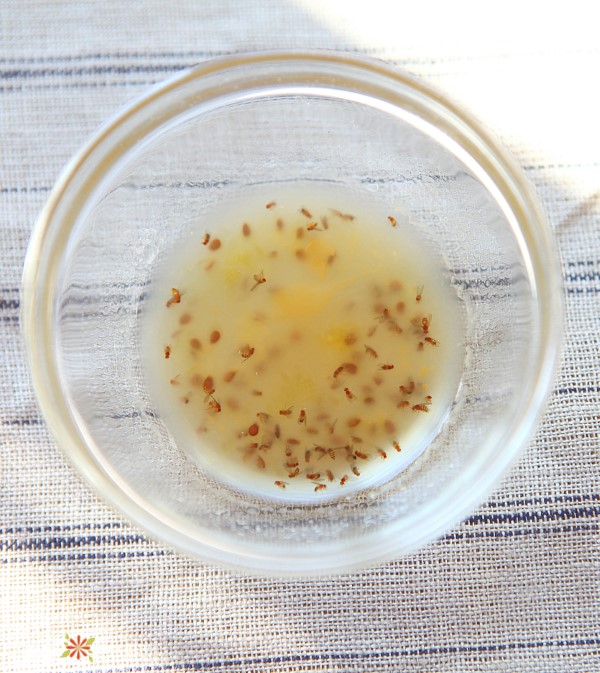

DIY Vermicomposting Bin
Over time, I’ve used many different vermicomposting bins. Nonetheless, my favourite comes from Pau Farré, who teaches workshops on vermicomposting at Metropolis Farmer proper right here in Vancouver, BC. This endeavor and 80 additional can be current in my Yard Alchemy E-book.
This design works fully for my metropolis yard, staying small nevertheless providing a great deal of worm castings.
Nevertheless I also have a worm lodge mannequin all by means of my yard that I’ve shared in my information, The Regenerative Yard. It helps folks work with nature fairly than in direction of it by displaying the steps to make over 80 permaculture initiatives I benefit from in my yard.
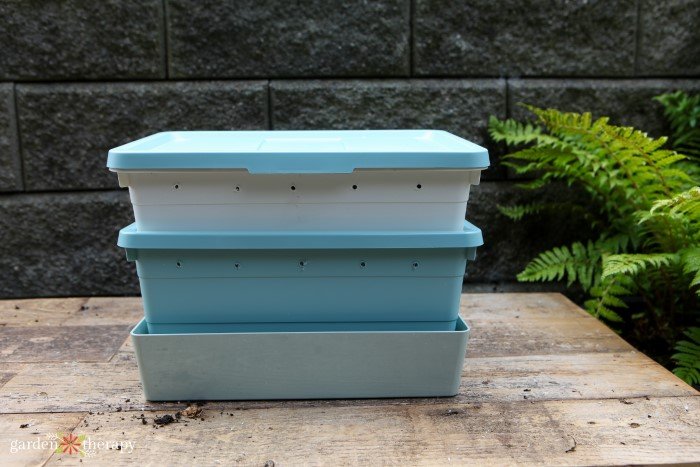

Provides
- Two nesting plastic bins (one with a lid)
- One shallower bin within the similar width
- Power drill or hammer and nails
- Eight 2-3’ sq. wood blocks for risers
- Dry provides (shredded newspaper, straw, dried leaves)
- ½ lb crimson wigglers (roughly 500 worms)
- Kitchen scraps
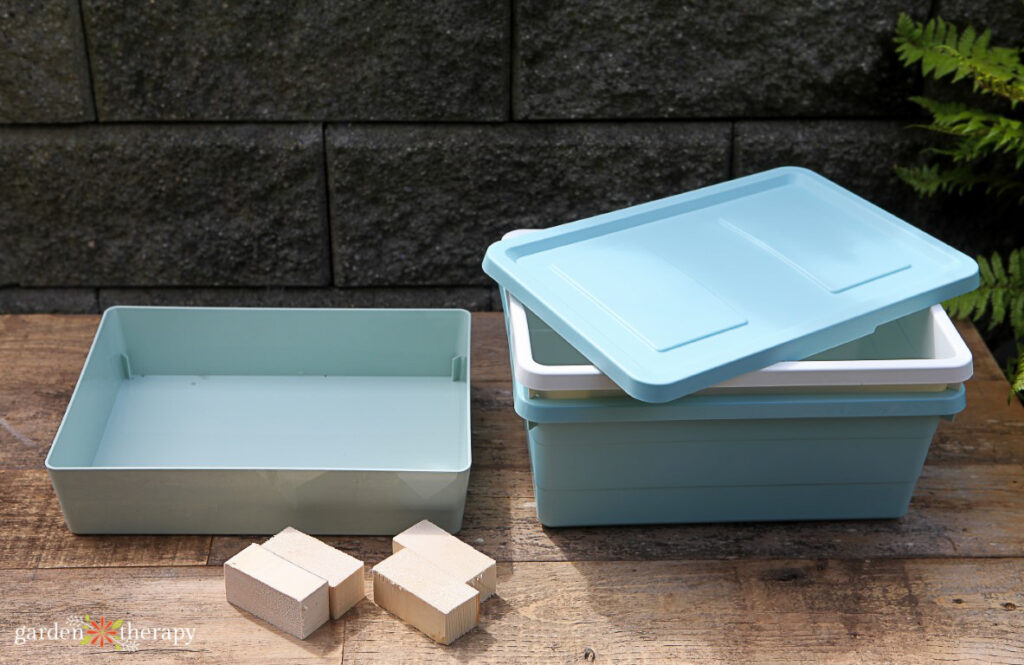

Make It!
Using your vitality drill (or hammer and nails), make drainage holes on the bottom of your two nesting bins. Make air holes on the perimeters of the bin. The air holes should be spaced throughout the perimeter of the bin, above the place the two bins overlap.
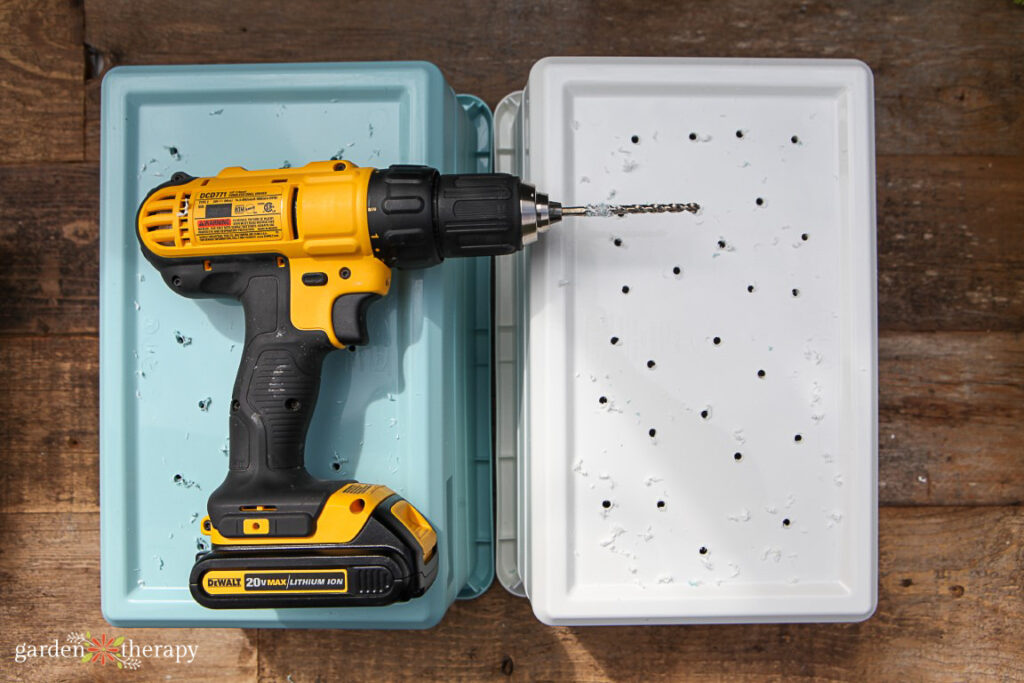

Fill considered one of many tall bins 1/3 full with the mixture of dry bedding provides. Moist down the bedding until it reaches the consistency of a wrung-out sponge.
Add your worms to 1 nook of the bin. On prime of the worms and bedding, add 4 cups of roughly chopped kitchen scraps. Cowl the kitchen scraps with one different layer of dry provides, leaving them dry this time.
Place 4 of the picket risers throughout the shallow bin to allow room for the leachate to empty. Set down the middle bin on prime of the risers, then add 4 additional risers throughout the bin. Place your worm bin on prime and secure it with a lid.
Protect the vermicomposting bin exterior in a cool, shady spot within the summertime and a warmth, lined spot throughout the winter. The temperature should be between 5-30°C. For many who reside in an area with a cold winter, switch the worms to a storage or place a blanket extreme of the bin if it doesn’t get too chilly.
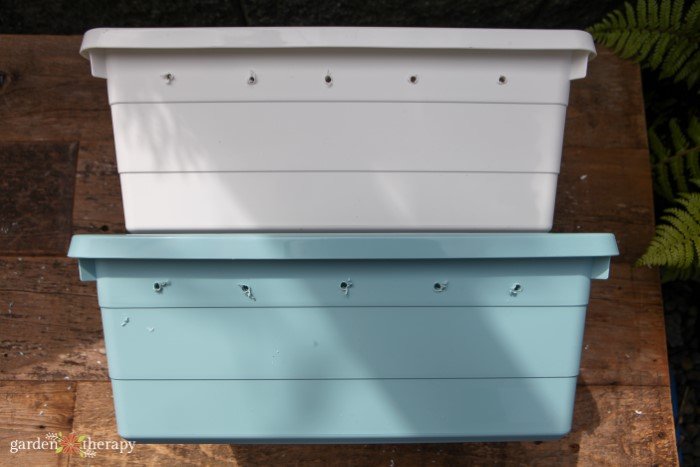

Harvesting Worm Castings
My DIY vermicomposting bin makes harvesting worm casting bins easy, accumulating in a single easy bin. When you end up ready for worm castings, stop feeding the worms for plenty of weeks until you uncover that all the kitchen scraps have been digested.
Take away the dry prime layer of bedding and switch the worms to the middle bin. It’s worthwhile to organize the empty heart bin with new bedding and kitchen scraps, merely as you initially organize the bin. This time, omit the worms.
Put your new bin on prime of the one which includes the entire worms and castings. The worms will now migrate up by the use of the holes to get to the bin with the meals. This leaves you with a nice, clear present of castings to utilize throughout the yard. You might harvest worm castings every 3-4 months to your yard.
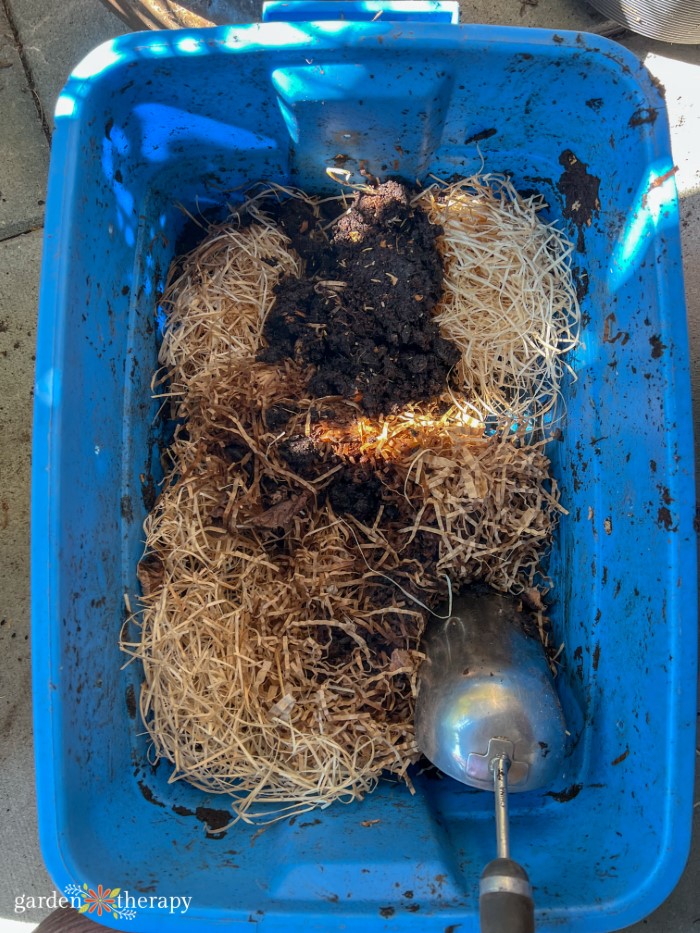

The suitable option to Use Worm Castings
Vermicompost is good for any and all vegetation, along with potted vegetation much like houseplants and succulents. To utilize worm castings, you can sprinkle them over prime of the soil and let the nutritional vitamins work their method down.
Alternatively, you can mix the vermicompost with the frequent topsoil when planting potted vegetation inside or throughout the soil exterior. It notably helps to supply clay or sandy soil additional pure supplies. Moreover they work terribly properly in making a seed starting mix.
The one time you wouldn’t want to make use of worm castings is when you already have soil rich in pure supplies. In any case, an extreme quantity of of an amazing issue can flip unhealthy.
An identical to together with an extreme quantity of fertilizer to a plant, you can overdo it with nutritional vitamins. Use worm castings sparingly, treating it as potent fertilizer.
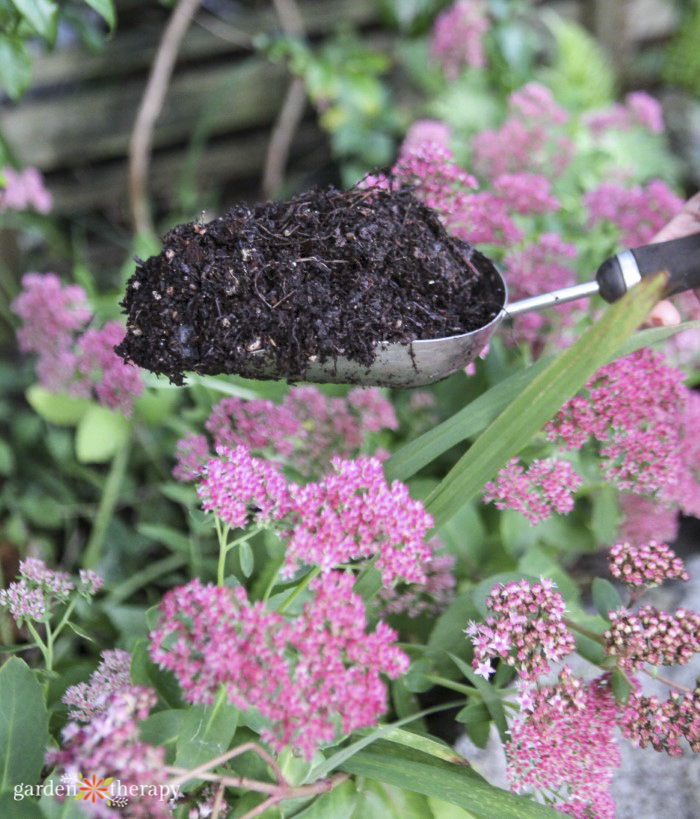

FAQ About Worm Castings
You might add worm castings every time they’re ready. Worm castings sometimes take about 3-4 months to be ready for harvest.
I like in order so as to add it notably throughout the spring and summer season by means of the rising season as a result of it acts as a potent fertilizer. You might depart the worm castings for longer throughout the fall and winter, prepared in order so as to add them to your seed-starting soil mix.
The N-P-Okay values will fluctuate primarily based totally on what the worm is consuming. Complete, the castings are extraordinarily nutritious and well-balanced should you’re feeding an amazing mixture of kitchen scraps.
Cope with your worm castings as a potent fertilizer. So certain, an extreme quantity of of an amazing issue is completely doable. In case your soil is already extreme in pure supplies, you don’t need worm castings. Complete, you would possibly add it as constantly as you might fertilizer, and your vegetation could possibly be totally good.
Worms like temperatures between 5-30°C (41-86°C F). For these with delicate winters, maintain them in a lined place throughout the winter. For these with harsher winters, it’s good to switch your worm bin to a storage or place a blanket over the bin.
I’ve misplaced worms sooner than throughout the winter. I don’t beat myself up over it, instead starting up to date throughout the spring with some new worms, bedding, and kitchen scraps.
And that’s it on all points worm poop! Bear in mind to carry a be careful for additional knowledge and initiatives from my permaculture and yard books, Yard Alchemy and The Regenerative Yard. I’ve solely merely scratched the ground of permaculture with vermicomposting! Let me know throughout the suggestions down beneath if you are going to add worms to your composting routine.
DIY Vermicompost Bin
Give your yard a big enhance with worm castings! That is one of the simplest ways to assemble a vermicompost bin that’s small nevertheless has a great deal of vitality.
- 2 Nesting plastic bins (one with a lid)
- 1 Shallower bin within the similar width
- 8 2-3’ sq. wood blocks for risers
- Dry provides shredded newspaper, straw, dried leaves
- ½ pound Pink wigglers roughly 500 worms
- kitchen scraps
-
With an affect drill (or hammer and nails) drill drainage holes on the bottom of the two nesting bins. Moreover use the drill to make air holes on the perimeters of the bins throughout the perimeter the place the bins overlap.
-
Fill considered one of many tall bins a third full with a mix of the dry bedding. Moist it down so it seems like a wrung-out spunge.
-
Add the worms to the bin throughout the nook. Then prime with 4 cups of kitchen scraps which may be roughly chopped.
-
Add a layer of dry bedding, leaving dry this time.
-
Add 4 picket risers throughout the shallow bin. This may occasionally allow room for the leachate to empty. Then, set down the middle bin on prime of the risers. Subsequent, add 4 additional risers to the bin. Lastly, place your worm bin on prime and add the lid.




